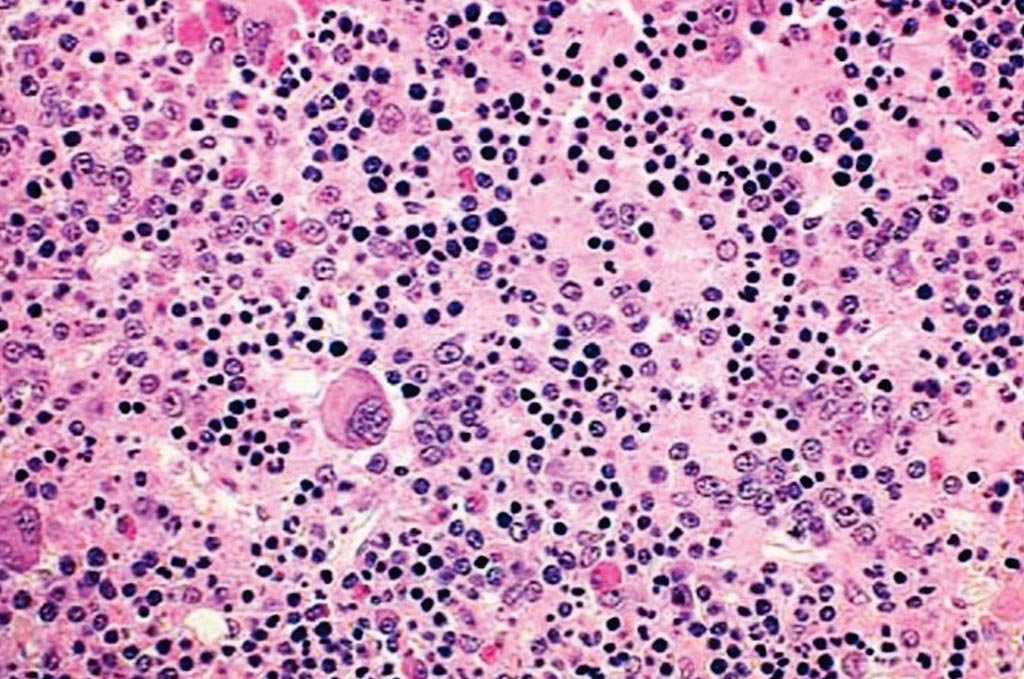Tumor Sequencing Finds Mutations Caused by Blood Disorder
By LabMedica International staff writers
Posted on 15 Jan 2019
Clinical sequencing assays aim to identify somatic mutations in cancer cells for accurate diagnosis and treatment. However, most clinical-grade implementations lack patient-matched germline DNA, and supplemental analyses are needed to infer the mutational status of variants.Posted on 15 Jan 2019
A new analysis suggests that a subset of patients with solid tumors may also suffer from blood conditions that introduce additional mutations into tumor sequencing data via infiltrating hematopoietic cells, particularly when matched germline sequencing data are not available.

Image: Bone marrow biopsy from a patient with polycythemia vera showing a hypercellular marrow as a result of an increase of myeloid, erythroid and megakaryocytic elements (Photo courtesy of Karl Theil MD).
Scientists at Rutgers University (New Brunswick, NJ, USA) studied clinical sequencing data for 2,030 individuals with solid tumors who were tested between late 2012 and last fall. In the process, they narrowed in on eight patients initially suspected of carrying myeloproliferative neoplasm (MPN)-associated JAK2 mutations in their solid tumors.
The team found that the allele frequencies for these activating JAK2-V617F mutations did not line up with tumor purity estimates. They used a combination of clinical records and sequencing data from targeted gene panels of tumor samples from three of the JAK2 mutation-positive patients, the investigators determined that at least four of the individuals with JAK2-V617F mutations had both cancer and MPNs such as polycythemia vera, essential thrombocythemia, and myelofibrosis.
In two of the patients with newly sequenced samples, for example, the team saw enhanced frequencies for the JAK2-V617F allele in samples with greater lymphocyte white blood cell content compared with samples containing higher tumor tissue levels. Likewise, the available targeted sequence data turned up additional clonal hematopoiesis of indeterminate potential-related mutations in genes such as U2AF1, TET2, or DNMT3A in JAK2-V617F-positive cases, again enriched in lymphocyte-enriched portions of patient samples relative to the tumor tissue on hand.
The authors concluded that when MPN-associated mutations are observed in solid tumor sequencing data, caution is necessary for proper patient treatment, and a hematologic workup should be considered in the appropriate clinical context. Their analysis suggests that although both of these results are possible, detection of JAK2-V617F may instead be associated with a coexistent MPN. The study was published on January 3, 2018, in the journal JAMA Oncology.
Related Links:
Rutgers University








 (3) (1).png)




